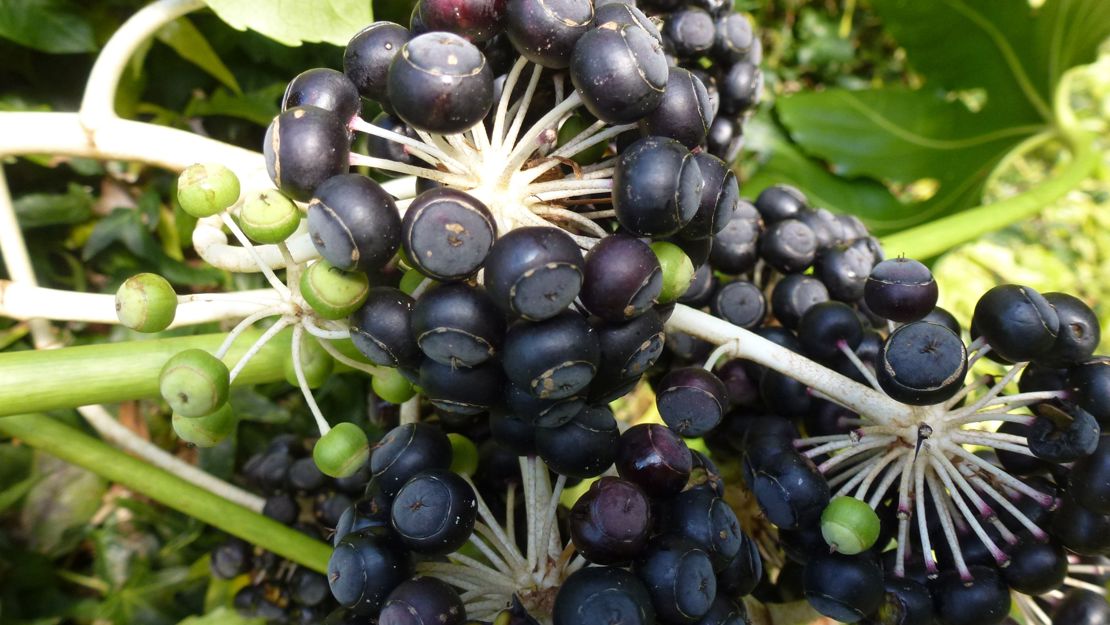Fatsia japonica
Fatsia
Family: Araliaceae
Origin: Asia

Regional Pest Management Plan (RPMP) status
- Whole region — Sustained control
- Hauraki Gulf Controlled Area Notice pest
General description
Shrub or small tree < 6 m tall. Leaves are large, glossy, < 60 cm long and palmate, with 5-10 lobes. Flowers are white and borne in terminal, spherical umbels in March – May. Fruit is black and ripens in early winter.
What you need to know
To help protect our environment, from 1 September 2022, you:
- will not be allowed to breed, distribute, release or sell fatsia within the Auckland region.
- will not be allowed to plant fatsia within the Auckland region, unless you are transferring an existing plant on your land to another location within the boundaries of the same property.
- must destroy any fatsia on land that you occupy if it has been planted in breach of the above rules and you are directed to do so by an authorised person.
Habitats
Forests, gullies, gardens, roadsides, rock walls, can grow as epiphyte.
Dispersal
Seeds dispersed by birds. Vegetative spread from suckers.
Impact on environment
Forms multi-stemmed thickets, preventing native vegetation regeneration. Can invade intact native bush. Poisonous and allergenic, can cause contact dermatitis.
Control
Site Management
Follow up treated areas 3 times per year. Encourage natural regeneration of native plants or replant treated areas where possible after 2-3 treatments to establish dense ground cover and minimise reinvasion.
Recommended approaches
Physical control
Method: Dig out.
Plant parts requiring disposal: All parts.
Disposal options: Remove to greenwaste or landfill if practical.
Biocontrol
Biocontrol is currently not available for this species.
Community agrichemical control recommendations
No qualifications: Cut stump and paste freshly cut base of stems with metsulfuron gel.
Basic Growsafe certified: Cut stump and spray freshly cut base with 2g metsulfuron-methyl per 1 L of water.
Certified Handler/Experienced agrichemical user: Foliar spray with 5g metsulfuron-methyl per 10L of water and 20ml penetrant.
Safety notes
Poisonous and can cause contact dermatitis.
Caution: When using any herbicide or pesticide please read the label thoroughly to ensure that all instructions and safety requirements are followed.




